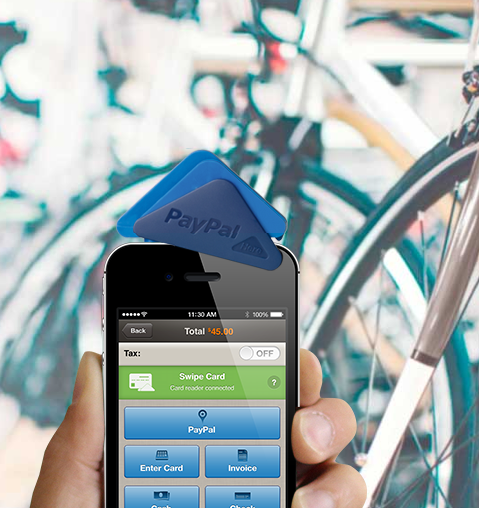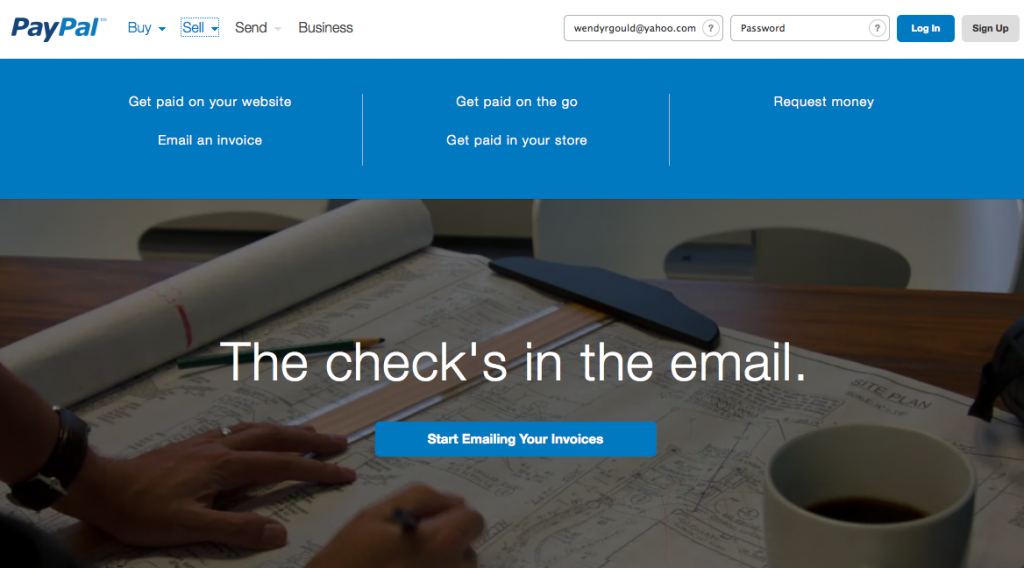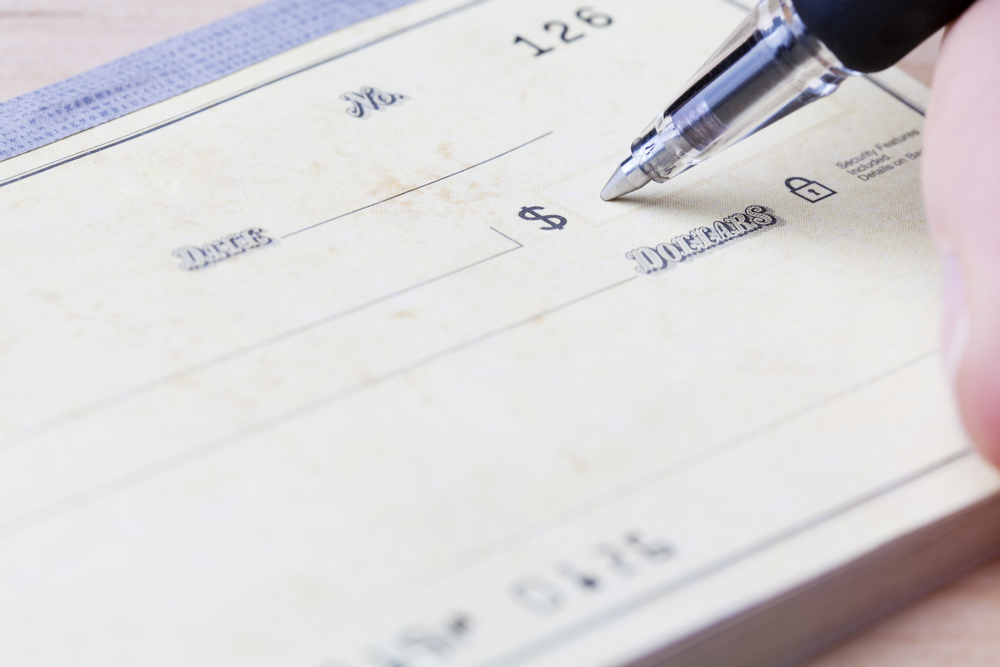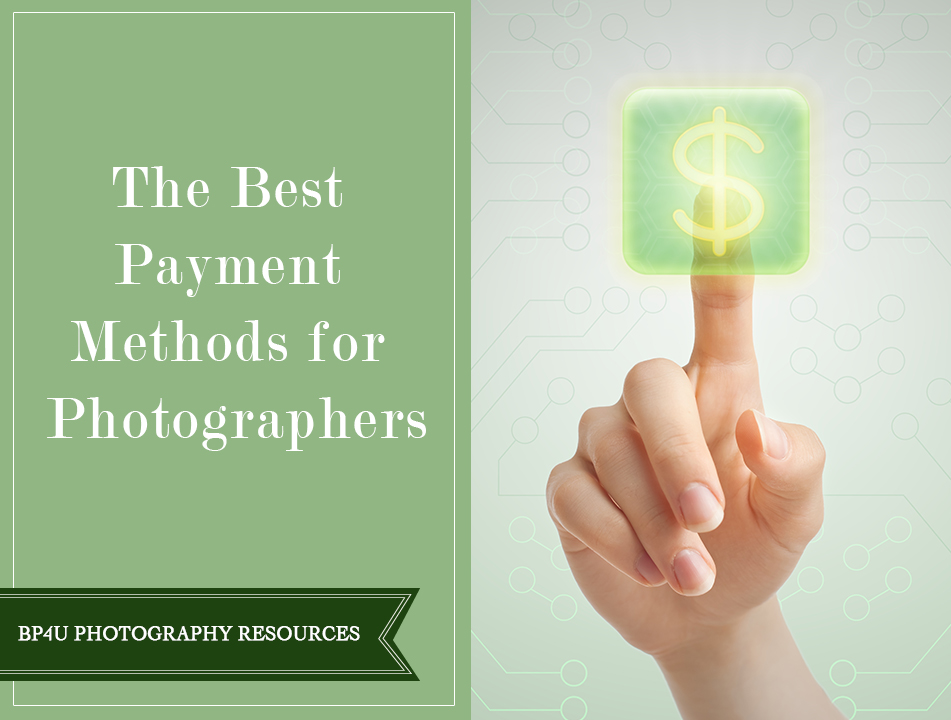You love what you do — and chances are you’d do it for free if you could — but you’ve got to get paid. Getting paid ensures you can pay your own bills and continue taking photographs for families, couples and individuals. Just call it the photog circle of life.
While discussing payments with clients may not be your favorite part of the job, it’s something that must be done. Fortunately, in today’s modern day and age you have lots of options when it comes to taking payments. Today we’re going to discuss various options along with their pros and cons.
Before we discuss how you’re paid, let’s first discuss when you’re paid after a client’s committed to booking you.
 1. Initial Retainer: An initial retainer should be collected from your client to reserve their session date. Many photographers specify that this deposit is non-refundable. Doing so reduces cancellations and prevents non-serious clients from taking a date out of your busy schedule.
1. Initial Retainer: An initial retainer should be collected from your client to reserve their session date. Many photographers specify that this deposit is non-refundable. Doing so reduces cancellations and prevents non-serious clients from taking a date out of your busy schedule.
2. Recurring Payments: If you’re a wedding photographer or booking a newborn milestone package or something similarly expensive, it’s a kind gesture to offer a payment plan to your clients. Doing so alleviates the financial burden of paying hundreds or thousands of dollars all at once. Consider offering customized payment plans for your clients. For example, some may prefer to pay $X per week for 10 weeks, some may want to pay $X once a month, and others yet may want to break their payments up into four chunks and pay over the course of a year. Whatever works for both you and the client is the best route to take. Just make sure you’re organized and keep detailed records. If offering too many recurring payment plans is difficult for you, that’s OK. Ultimately, you need to do what works best for you and your photography business.
3. Final Payment: Sometimes a client prefers to pay their initial deposit and then the remaining lump sum at a later date. Or you may have a client who missed a recurring payment and still owes you money as their session date approaches. In either case, having a final “due date” set before your actual session will save you headaches. We recommend having a final due date no less than two weeks before your client’s session.
Online Payment Methods
You know you’re living in the future when you’ve got the ability to zip money from your pocket to another person’s pocket in a matter of minutes.

PayPal: Chances are, you’re very familiar with PayPal. It’s one of the most common forms of online payment and has made e-commerce incredibly efficient and convenient. Many of your clients may already have a PayPal account set up and linked to their bank account, so offering this as a payment option is a wise move. It’s also easy to bill your clients through PayPal, making recurring payment plans a breeze. The biggest downside is that you will have to pay fees. For personal accounts, that fee is 4.9% plus .30 cents per transaction. That’s $25 out of your $500 payment, so it does add up. If PayPal becomes a major means of payment collection for you, we highly recommend you open either a Premier or Business Account, as that fee drops to 2.9% plus .30 cents per transaction. This can be done easily through your PayPal account or by calling PayPal.

WePay: WePay is an alternative to PayPal that provides four simple tools to collect money. “You can sell tickets to events, collect donations for fundraisers, sell items online, and send invoices.” As a photographer, you’d likely only use the latter option. Like PayPal, WePay charges a fee. For payments made with a credit card, they’ll take a 2.9% cut plus .30 cents per transaction. For payments made with a connected bank account, they charge only 1% plus .30 cents per transaction.

Swipe or PayPal Here: Both Swipe and PayPal Here allow you to process credit card payments with your smart phone or tablet. If you have a PayPal account, all you need to do is request their “Here” triangle and then download the app onto your device. The same applies for Swipe’s “Square Up.” The client can use any debit or credit card to pay. This payment method is ideal for those who meet with clients regularly, attend bridal shows or similar and book sessions on the spot, or if you want to collect payment at the time of your session. One downside to these mobile payment options is that it isn’t convenient for collecting recurring payments, as that would require you to meet with your client every time a payment is due. The other downside is that you will incur a fee. Swipe charges 2.75% per transaction and PayPal charges 2.7% per transaction. Over time, those fees add up. It’s a good move to work that additional fee into your session/product prices.
Offline Payment Methods
Paying “offline” may be old school, but it’s still a viable means of exchanging money. In some cases, you may find clients prefer to pay offline.

Checks: Aside from receiving payment online, checks are likely the most common way clients will want to pay you. Unlike various online methods of payments, you will not have to pay a fee with a check, so that’s a positive. Paying with a check is simple, straightforward and leaves a paper trail for both you and the client. Plus, if you have a smart phone and your bank has an app, you may even be able to deposit the check by phone. The downside to checks, of course, is that they can bounce if your client has insufficient funds. For that reason, it’s imperative that you have a clause in your contract that specifies protocol for bad checks. You’ll want to charge an additional fee for a bounced check to cover any incurred fees from your bank and to cover your time. You may also want to specify that if a client writes a bad check, then they must switch to a different payment method from there on out.
Money Orders: Money orders are less convenient for your clients compared to checks, but they will not bounce. The only downside is that if you misplace a money order, you are out of luck, as it’s the same thing as losing cash.
 Cash: While we don’t specifically advise against receiving cash, we believe that other payment methods are better. First of all, cash exchanges do not leave an explicit money trail. While it’s unlikely, there’s always the potential for a client to claim they already paid you when they did not. Secondly, carrying large wads of cash around isn’t exactly wise, so if you’re a wedding photographer or you offer bigger packages, consider just how much cash your client — and you — will carry at any given time. People just don’t carry hundreds or thousands of dollars in cash these days.
Cash: While we don’t specifically advise against receiving cash, we believe that other payment methods are better. First of all, cash exchanges do not leave an explicit money trail. While it’s unlikely, there’s always the potential for a client to claim they already paid you when they did not. Secondly, carrying large wads of cash around isn’t exactly wise, so if you’re a wedding photographer or you offer bigger packages, consider just how much cash your client — and you — will carry at any given time. People just don’t carry hundreds or thousands of dollars in cash these days.
—–
We ❤ your feedback! Share your thoughts/questions in the comment box below. Have more tips? We’d love to hear your ideas!
Blog Posts You might Like:
How To Add Value To Your Photography
How To Get More Photography Clients Using Contests
3 Biggest Mistakes I Made In My Photography Career


